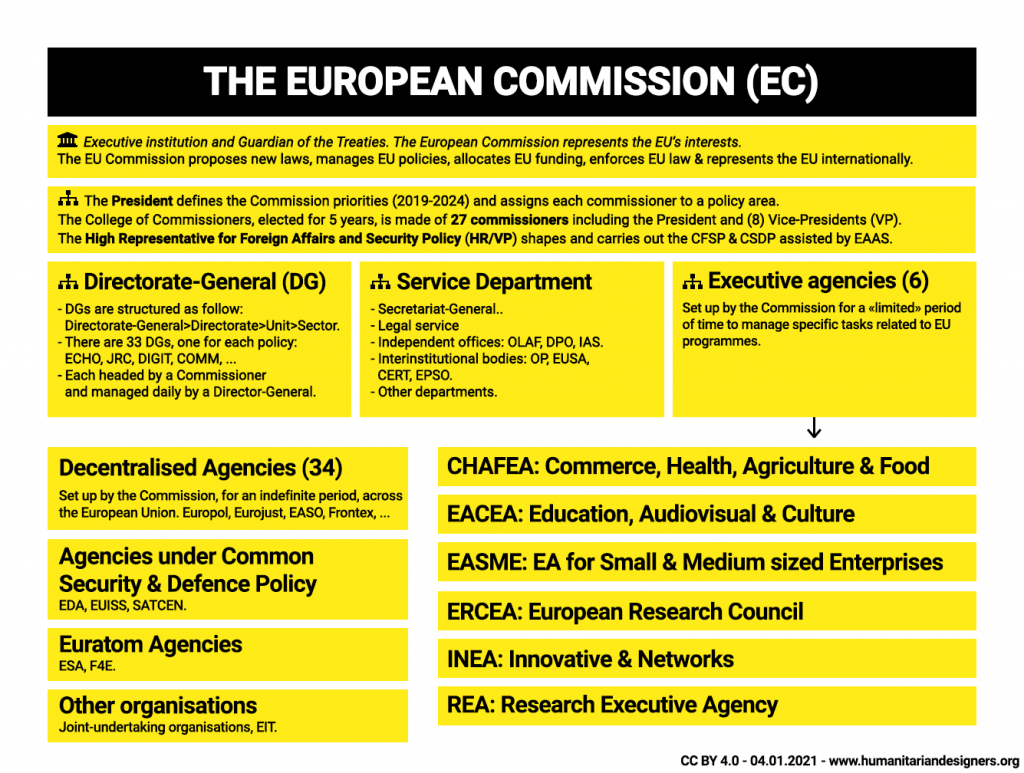Report on Municipal Grocery Stores as a Strategy for Urban Sustainability
Introduction
A proposal to establish a network of city-owned grocery stores in New York City, championed by Zohran Mamdani, has gained significant public support as a solution to rising food costs and food insecurity. This initiative aims to create a non-profit grocery model focused on affordability rather than profit maximization. With 85% of New Yorkers reporting higher grocery bills and 91% concerned about food-related inflation, the proposal directly addresses a critical urban challenge. This report analyzes the viability of municipal grocery stores through the lens of the United Nations Sustainable Development Goals (SDGs), examining historical precedents, contemporary models, and a strategic framework for successful implementation.
Alignment with United Nations Sustainable Development Goals (SDGs)
The establishment of public grocery stores presents a direct pathway to advancing several key SDGs by creating more equitable and resilient urban environments.
SDG 1 (No Poverty) & SDG 2 (Zero Hunger)
The core objective of the proposal is to ensure access to affordable, nutritious food, which is fundamental to achieving SDG 1 and SDG 2.
- Alleviating Financial Burden: With the food consumer price index rising 23.6% from 2020 to 2024, working-class families spend a disproportionate amount of their income on food. By selling goods at wholesale prices and eliminating overheads like rent, municipal stores can significantly lower food costs, directly combating poverty.
- Enhancing Food Security: The stores would provide a stable and affordable source of food, mitigating the effects of inflation and market volatility on vulnerable populations and ensuring consistent access to nutrition.
SDG 10 (Reduced Inequalities) & SDG 11 (Sustainable Cities and Communities)
This initiative is a powerful tool for building inclusive cities and reducing systemic inequalities in access to basic services.
- Combating Food Deserts: The model provides a public-sector solution for communities that the private market deems unprofitable, directly addressing the inequality of food access in many urban districts.
- Building Inclusive Infrastructure: Like public libraries and parks, city-owned grocery stores represent a form of public infrastructure that makes cities more inclusive and sustainable for all residents, regardless of income.
- Strengthening Community Resilience: By taking control of a key aspect of the local food system, cities can ensure that communities are not left at the mercy of private sector failures, as evidenced by the experiences in Atlanta.
SDG 3 (Good Health and Well-being)
Access to affordable fresh food is a critical determinant of public health.
- Promoting Nutritious Diets: By making fresh produce and other healthy foods more affordable and accessible, municipal stores can help improve community health outcomes and reduce the prevalence of diet-related diseases.
Analysis of Precedents and Parallel Models
The concept of government-supported food infrastructure is not novel and has been successfully implemented in various forms globally and within the United States.
Historical and International Examples
Governments have a long history of intervening in food systems to ensure public welfare.
- United Kingdom: During wartime, over 2,000 “British restaurants” served price-capped meals to the public.
- Poland: “Milk bars” have long operated as subsidized cafeterias providing low-cost meals.
- Modern Initiatives: Similar public food establishments are currently operating in countries including India, Turkey, Indonesia, and Brazil.
Contemporary U.S. Municipal Efforts
Across the U.S., local governments are already stepping in where private grocers have failed.
- Urban Initiatives: Cities like Atlanta, Georgia, have created public-private partnerships to bring full-service grocery stores to underserved districts after years of failing to attract private developers.
- Rural Solutions: Small towns in Kansas and Florida have successfully established town-owned grocery stores to serve their communities after private stores closed.
The U.S. Military Commissary System: A Proven Model
A powerful domestic precedent exists within the U.S. military, demonstrating the effectiveness of a large-scale, non-profit grocery system.
- Significant Savings: Military commissaries sell groceries to service members and their families at prices 30-40% lower than commercial retailers by operating on a cost-plus-surcharge model rather than for profit.
- Demonstrated Impact: In 2023, the Defense Commissary Agency saved military families an estimated $1.58 billion, proving the model’s financial viability and benefit to its community.
Proposed Operational Framework for Success
To ensure the success of municipal grocery stores in a complex urban environment like New York City, a strategic approach is required.
Key Strategic Recommendations
- Prioritize Community Engagement: Success is contingent on community buy-in. Following the example of Atlanta, the city should conduct extensive outreach through roundtables, surveys, and meetings to ensure the stores meet the specific needs and preferences of the communities they serve. This aligns with the principles of inclusive development central to SDG 11.
- Adopt a Universal Service Model: To avoid stigma and improve the economic model, the stores should be promoted as a universal public service for all residents, not just targeted groups. This broadens the customer base and reinforces the stores as integral community assets.
- Leverage Economies of Scale: While the initial proposal is for five stores, they can achieve economies of scale by linking their procurement systems to the city’s existing large-scale food purchasing agreements for public schools, hospitals, and colleges.
- Implement Efficient Retail Models: The stores could adopt proven strategies from successful private chains. Models to consider include the limited-assortment, small-footprint approach of Aldi or the warehouse-style, direct-to-consumer model of Costco.
Conclusion
The proposal for municipal grocery stores in New York City is a practical and evidence-based strategy for addressing critical urban challenges. Supported by historical precedent, successful contemporary examples, and the highly effective U.S. military commissary system, the model offers a viable public option where the private market has proven insufficient. By focusing on affordability, access, and community needs, such an initiative would serve as a powerful tool for advancing the Sustainable Development Goals, particularly in creating cities that are more equitable, healthy, and resilient for all residents.
SDGs Addressed in the Article
SDG 1: No Poverty
- The article highlights the financial strain on working people in New York City due to high food prices. Zohran Mamdani’s platform is “laser-focused on making the country’s largest city more affordable for working people.” The proposal for city-owned grocery stores aims to lower food costs, which would directly alleviate financial pressure on low-income households, a key aspect of poverty reduction.
SDG 2: Zero Hunger
- The central theme is ensuring access to affordable food. The article discusses “food deserts” in Atlanta where communities have limited access to fresh food. The proposed municipal grocery stores are intended to “keep food prices low” and ensure that communities failed by the private sector have access to essential food supplies. This directly aligns with the goal of ending hunger and ensuring food access for all.
SDG 10: Reduced Inequalities
- The article points out that “working-class families spend a much larger percentage of their household monthly income on food than middle- and upper-class families.” It also describes how private grocers disqualify certain districts for not being “a profitable enough area.” The proposed public grocery stores aim to correct this market failure and provide equitable access to affordable food, thus reducing economic inequality between different communities and income groups.
SDG 11: Sustainable Cities and Communities
- The initiative is a city-level policy for New York City to address a fundamental need for its residents. The article discusses how municipalities like Atlanta, Madison, and small towns in Kansas and Florida are stepping in to provide essential services where the private market has failed. This relates to making cities inclusive, safe, resilient, and sustainable by ensuring access to basic services like affordable food.
SDG 17: Partnerships for the Goals
- The article provides several examples of partnerships. In Atlanta, a “public-private partnership” was formed between Invest Atlanta (the city’s economic development authority) and Savi Provisions (a private grocer). The proposal for NYC suggests the city could link its grocery stores to existing food purchasing agreements for “public schools, hospitals and community colleges” to achieve economies of scale. This highlights the importance of collaboration between public entities, private sectors, and community organizations.
Specific Targets Identified
Under SDG 2: Zero Hunger
- Target 2.1: By 2030, end hunger and ensure access by all people, in particular the poor and people in vulnerable situations, to safe, nutritious and sufficient food all year round.
- The proposal for city-owned grocery stores directly aims to achieve this by making food more affordable and accessible, especially in areas described as “food deserts” where private stores won’t operate. The goal is to provide a reliable source of food for working people and low-income families.
Under SDG 10: Reduced Inequalities
- Target 10.2: By 2030, empower and promote the social and economic inclusion of all, irrespective of economic or other status.
- The initiative is designed to counteract the inequality where low-income families are disproportionately affected by high food prices and where certain neighborhoods are neglected by private businesses. By providing a universal service, as suggested by Anna Chworow, it promotes economic inclusion for all residents.
Under SDG 11: Sustainable Cities and Communities
- Target 11.1: By 2030, ensure access for all to adequate, safe and affordable housing and basic services.
- Affordable food is a basic service. The article frames the municipal grocery store as a “public option,” similar to “the postal service, public libraries, and public parks,” which are critical components of a functional and sustainable city that serves all its residents.
Under SDG 17: Partnerships for the Goals
- Target 17.17: Encourage and promote effective public, public-private and civil society partnerships.
- The article explicitly details the success of a public-private partnership in Atlanta to establish a grocery store. It also mentions the potential for partnerships between the proposed NYC stores and other public institutions like schools and hospitals to leverage buying power, demonstrating this target in action.
Indicators for Measuring Progress
Indicators for SDG 2 (Zero Hunger) and SDG 10 (Reduced Inequalities)
- Food Price Inflation: The article mentions that “From 2020 to 2024, the food consumer price index rose 23.6%.” A reduction in this rate within municipal stores would be a direct measure of success.
- Relative Food Cost: The article states that “the average cost of groceries in New York City is 18% higher than the national average.” Progress could be measured by how much the municipal stores can lower this premium.
- Consumer Savings: The military commissary model is cited as saving families “30 to 40% cheaper” on groceries and a total of “$1.58bn in 2023.” Similar metrics could be used to track the financial benefit to NYC residents.
- Household Expenditure on Food: The article notes that “working-class families spend a much larger percentage of their household monthly income on food.” A decrease in this percentage for low-income households would indicate progress.
Indicators for SDG 11 (Sustainable Cities and Communities)
- Access in Underserved Areas: The problem of “food deserts” is raised. An indicator would be the number of new grocery stores opened in districts with previously limited access to fresh food.
- Public Support and Community Buy-in: The article cites a poll where “Two-thirds of New Yorkers polled said they support the creation of municipal grocery stores.” Continued monitoring of public opinion and community engagement (through roundtables, questionnaires, etc., as done in Atlanta) would serve as an indicator of inclusivity and success.
Summary of Findings
| SDGs | Targets | Indicators |
|---|---|---|
| SDG 2: Zero Hunger | 2.1: Ensure access by all people, in particular the poor and people in vulnerable situations, to safe, nutritious and sufficient food all year round. |
|
| SDG 10: Reduced Inequalities | 10.2: Empower and promote the social and economic inclusion of all, irrespective of economic or other status. |
|
| SDG 11: Sustainable Cities and Communities | 11.1: Ensure access for all to adequate, safe and affordable housing and basic services. |
|
| SDG 17: Partnerships for the Goals | 17.17: Encourage and promote effective public, public-private and civil society partnerships. |
|
Source: theguardian.com







